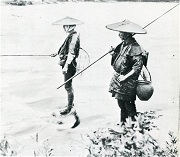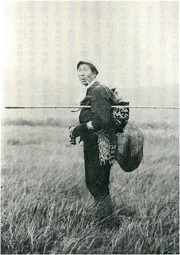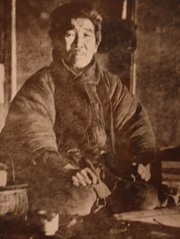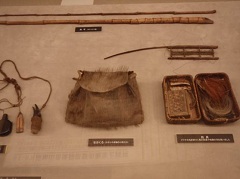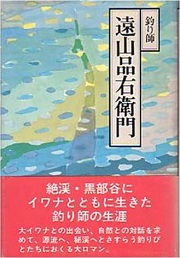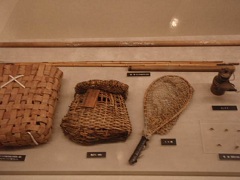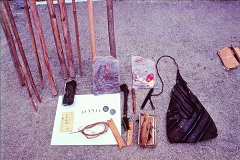テンカラの歴史
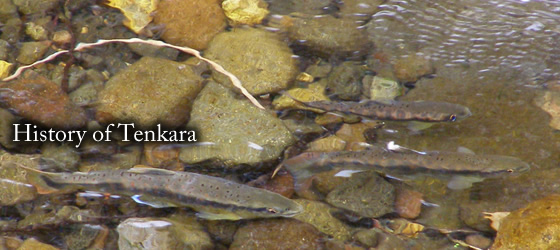
History of Tenkara
Masami Sakakibara
Historic reference of a fly like equipment used to catch fish dates back to well
before Christ. It is said that similar methods were used in Japan not long after
that. During the Edo era,about 400 years ago, a document states of a Merchant
selling kebari for Ayu (Japanese Sweet Fish) fishing.
Ayu, migrate to rivers from the sea to spawn like salmon, are rather easy targets
since they share the lower altitude habitat with humans. Japanese native trout
such as Amago, Yamame, and Iwana, are found in cooler alpine environment
typically 1000m~3000m above sea level. Away from civilization, people who
fished those trout were professional fisherman, hunters, and others who had
the know how to survive and live off the fruits of deep and hostile mountains
of Japan.
These professionals were able to catch fish using Tenkara, without the fish ever
touching the ground. If the fish touched the ground then it had to be washed,
taking away a lot of its flavor (slime on the skin becomes very crunchy when
grilled) and market value. Earliest record of these professionals using
kebari” to catch fish can be found in the book “Tateyama Climbing Journal”,
written by Earnest Satow, a British diplomat who accompanied his countryman
Minister Parks on his journey.
It is said that the man who guided them through the rugged rivers and
mountains of Tateyama, was the legendary Iwana fisherman Shinaemon Tōyama.
In the journal, it is mentioned that Iwana was caught using kebari and that the
fish (Iwana) was delicious. Kebari fishing equipment used by
Shinaemon Tōyama is displayed at the Mountaineering Museum in Nagano
Prefecture.
Tenkara anglers who have a chance to travel to Japan should give the museum
a visit and see how“simple” the Tenkara equipments of the professionals were.
From my personal reference, my father, grandfather, great grandfather and their friends
knew of a fishing method called “Tenkara”. My wife’s family had lived in
a small village on the border of Gifu and Toyama prefectures known as the Hida
Region, which is deep in the mountains close to the “Shirayama” and “
Shirakawagou” areas.
The village no longer exists, but my wife remembers the elders talking about
Tenkara. To me this proves that the term “Tenkara” had already been known
during the Meiji era and probably before. Many including the Japanese may
not know that in those old days, there were different groups in different
regions of Japan that moved from one mountain to another, living in the
wilderness fishing and hunting.
They were experts of the mountains and they kept many secrets.
They relied greatly on the protein source Japanese trout provided, and they had
no interest in creating competition. “Matagi” of the northern regions were
also very secretive mountain and hunting expert groups. They used their own
languages when hunting and fished with methods similar to Tenkara, although
we don’t know they called it that.
So Tenkara was probably a known term in some regions, and
others used different terms. We may never know the true source of the word
“Tenkara”.
Today, Tenkara is the common term used in and outside Japan. We cannot
support our families with the fish we catch, but it is a tradition we inherited
and love. What I think the importance of Tenkara we need to recognize is
not about what it once was, but what we make of it today.
Reference:”Truth About Kebari Fishing You Must Not Read” Hisao Ishigaki, Ningensha
Images Provided by Hisao Ishigaki

